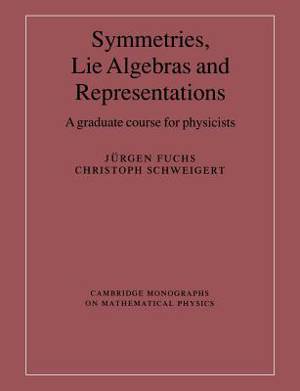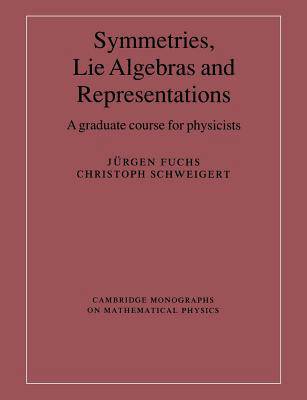
- Afhalen na 1 uur in een winkel met voorraad
- Gratis thuislevering in België vanaf € 30
- Ruim aanbod met 7 miljoen producten
- Afhalen na 1 uur in een winkel met voorraad
- Gratis thuislevering in België vanaf € 30
- Ruim aanbod met 7 miljoen producten
Zoeken
Symmetries, Lie Algebras and Representations
A Graduate Course for Physicists
Jurgen Fuchs, Christoph Schweigert, J Rgen Fuchs
€ 109,45
+ 218 punten
Omschrijving
This is an introduction to Lie algebras and their applications in physics. The first three chapters show how Lie algebras arise naturally from symmetries of physical systems and illustrate through examples much of their general structure. Chapters 4 to 13 give a detailed introduction to Lie algebras and their representations, covering the Cartan-Weyl basis, simple and affine Lie algebras, real forms and Lie groups, the Weyl group, automorphisms, loop algebras and highest weight representations. Chapters 14 to 22 cover specific further topics, such as Verma modules, Casimirs, tensor products and Clebsch-Gordan coefficients, invariant tensors, subalgebras and branching rules, Young tableaux, spinors, Clifford algebras and supersymmetry, representations on function spaces, and Hopf algebras and representation rings. A detailed reference list is provided, and many exercises and examples throughout the book illustrate the use of Lie algebras in real physical problems. The text is written at a level accessible to graduate students, but will also provide a comprehensive reference for researchers.
Specificaties
Betrokkenen
- Auteur(s):
- Uitgeverij:
Inhoud
- Aantal bladzijden:
- 464
- Taal:
- Engels
- Reeks:
Eigenschappen
- Productcode (EAN):
- 9780521541190
- Verschijningsdatum:
- 9/10/2003
- Uitvoering:
- Paperback
- Formaat:
- Trade paperback (VS)
- Afmetingen:
- 202 mm x 233 mm
- Gewicht:
- 834 g

Alleen bij Standaard Boekhandel
+ 218 punten op je klantenkaart van Standaard Boekhandel
Beoordelingen
We publiceren alleen reviews die voldoen aan de voorwaarden voor reviews. Bekijk onze voorwaarden voor reviews.











